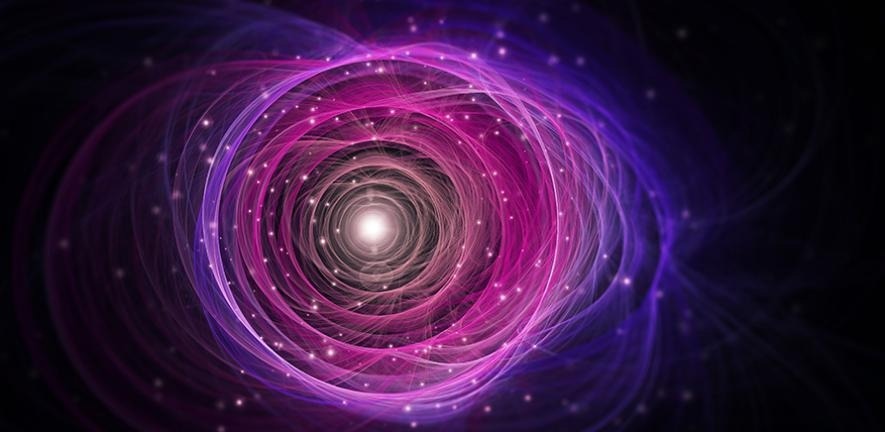Scientists from the University of Cambridge, together with colleagues from Austria, the US, and Israel formulated a theory illustrating a new state of light, which has exploitable quantum properties across a wide range of frequencies, nearly as high as X-ray frequencies.

Design of a glowing fractal pattern with stars floating on a black background. Image Credit: David Wall via Getty Images.
Their findings can be seen in the journal Nature Physics.
The world that we observe can be defined using the laws of classical physics, but when we look at things at an atomic scale, the extraordinary world of quantum physics comes into play.
Visualize a basketball: seeing it with the naked eye, the basketball acts according to the laws of classical physics. But the atoms that compose the basketball act according to quantum physics instead.
Light is no exception: from sunlight to radio waves, it can mostly be described using classical physics. But at the micro and nanoscale so-called quantum fluctuations start playing a role and classical physics cannot account for them.
Dr. Andrea Pizzi, Study Lead Author and Junior Research Fellow, Trinity College, Cambridge
Pizzi, who is presently based at Harvard University, partnered with Ido Kaminer’s group at the Technion-Israel Institute of Technology and colleagues at MIT and the University of Vienna to formulate a theory that envisages a new method of exploiting the quantum nature of light.
“Quantum fluctuations make quantum light harder to study, but also more interesting: if correctly engineered, quantum fluctuations can be a resource,” said Pizzi. “Controlling the state of quantum light could enable new techniques in microscopy and quantum computation.”
One of the foremost methods for producing light employs powerful lasers. When an adequately powerful laser is directed at a group of emitters, it can tear some electrons away from the emitters and strengthen them.
Ultimately, a few of these electrons rejoin with the emitters they were removed from, and the extra energy they absorbed is emitted as light. This process converts the low-frequency input light into high-frequency output radiation.
“The assumption has been that all these emitters are independent from one another, resulting in output light in which quantum fluctuations are pretty featureless,” said Pizzi.
We wanted to study a system where the emitters are not independent, but correlated: the state of one particle tells you something about the state of another. In this case, the output light starts behaving very differently, and its quantum fluctuations become highly structured, and potentially more useful.
Dr. Andrea Pizzi, Study Lead Author and Junior Research Fellow, Trinity College, Cambridge
To resolve this kind of issue, referred to as a many-body problem, the scientists used a mixture of theoretical analysis and computer simulations, where the output light from a collection of correlated emitters could be illustrated using quantum physics.
The theory, whose progress was spearheaded by Pizzi and Alexey Gorlach from the Technion, shows that controllable quantum light can be produced by correlated emitters with a powerful laser. The technique produces high-energy output light and could be employed to create the quantum-optical structure of X-rays.
“We worked for months to get the equations cleaner and cleaner until we got to the point where we could describe the connection between the output light and the input correlations with just one compact equation. As a physicist, I find this beautiful,” said Pizzi.
Looking forward, we would like to collaborate with experimentalists to provide a validation of our predictions. On the theory side of things, our work suggests many-body systems as a resource for generating quantum light, a concept that we want to investigate more broadly, beyond the setup considered in this work.
Dr. Andrea Pizzi, Study Lead Author and Junior Research Fellow, Trinity College, Cambridge
The study was partly supported by the Royal Society. Andrea Pizzi is a Junior Research Fellow at Trinity College, Cambridge. Pizzi carried out the research at Cambridge’s Cavendish Laboratory.
Journal Reference
Pizzi, A., et al. (2023) Light emission from strongly driven many-body systems. Nature Physics. doi.org/10.1038/s41567-022-01910-7.